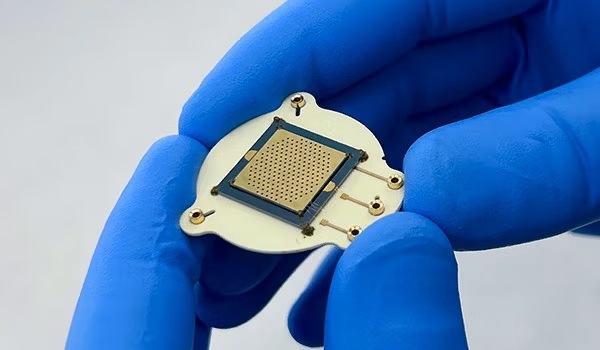3D Printed Point-Of-Care Mass Spectrometer Outperforms State-Of-The-Art Models
Posted on 10 Apr 2024
Mass spectrometry is a precise technique for identifying the chemical components of a sample and has significant potential for monitoring chronic illness health states, such as measuring hormone levels for hypothyroidism patients. However, the high cost of mass spectrometers, often reaching several hundred thousand dollars, restricts them to labs that require the transportation of blood samples for analysis, thereby complicating chronic disease management. Now, researchers have taken a big step towards building inexpensive hardware that could make mass spectrometry local. The team has used 3D printing to create a low-cost ionizer, a vital component of the mass spectrometer, that can deliver twice as good a performance as its high-end counterparts.
The device developed at MIT (Cambridge, MA, USA) spans just a few centimeters and is designed for mass production, enabling its integration into mass spectrometers through robotic assembly method. This also makes it more economical than traditional ionizers which often demand manual assembly, expensive hardware to interface with the mass spectrometer, or construction in a semiconductor clean room. By using 3D printing instead, along with some clever optimizations, the researchers produced a low-cost electrospray emitter that can outperform state-of-the-art mass spectrometry ionizers.

The optimizations allow the electrospray emitter to operate at 24% higher voltage than state-of-the-art versions, thereby more than doubling its signal-to-noise ratio. The method of batch processing could drastically reduce the cost of each emitter, paving the way for affordable point-of-care mass spectrometry. The team is now focused on developing a prototype that integrates their ionizer with a 3D-printed mass filter, another critical component of the device. Additionally, they are advancing the development of 3D-printed vacuum pumps, a key challenge in 3D printing an entire compact mass spectrometer.
“Our big vision is to make mass spectrometry local. For someone who has a chronic disease that requires constant monitoring, they could have something the size of a shoebox that they could use to do this test at home. For that to happen, the hardware has to be inexpensive,” said Luis Fernando Velásquez-García, a principal research scientist in MIT’s Microsystems Technology Laboratories.
Related Links:
MIT













